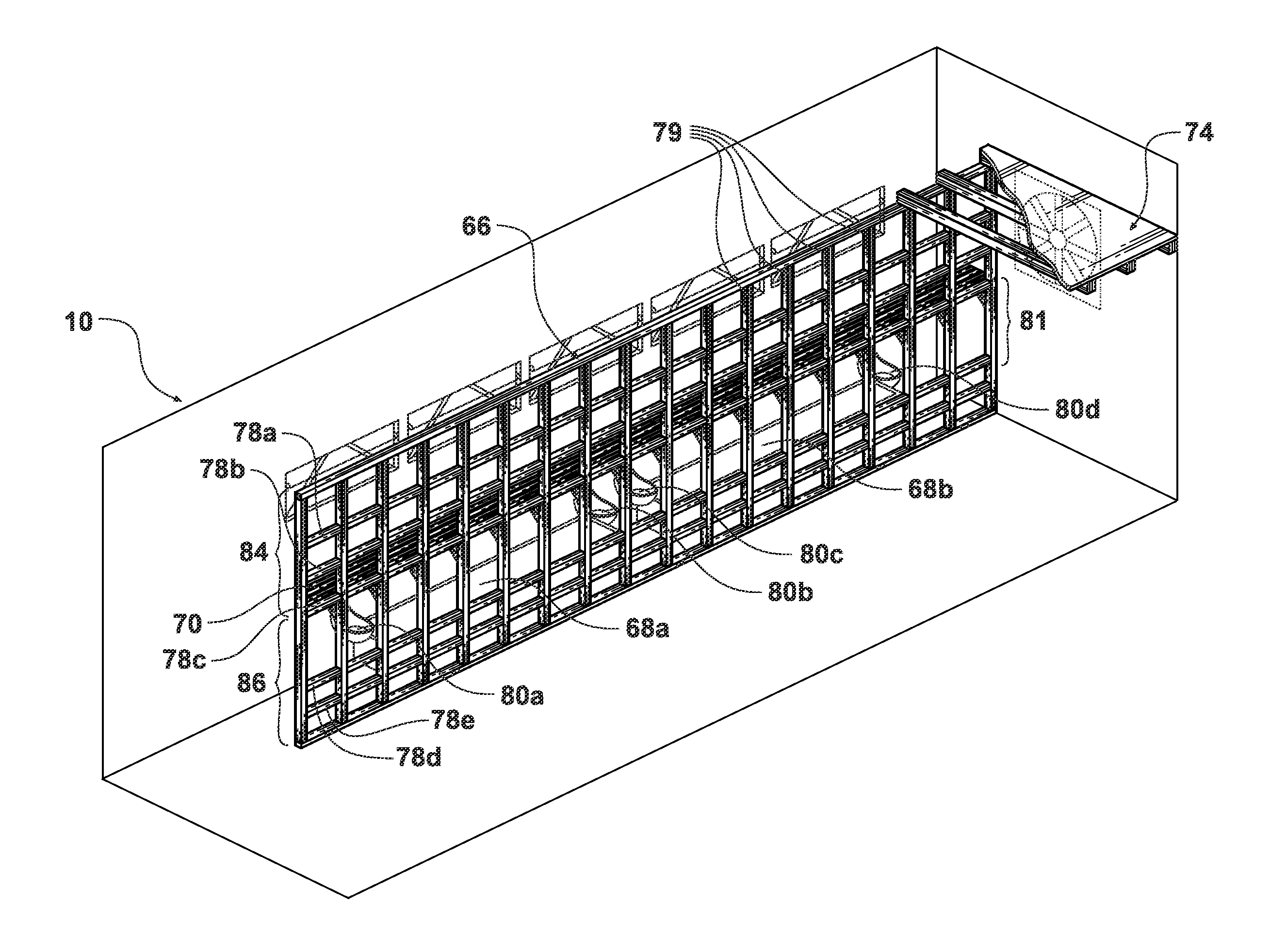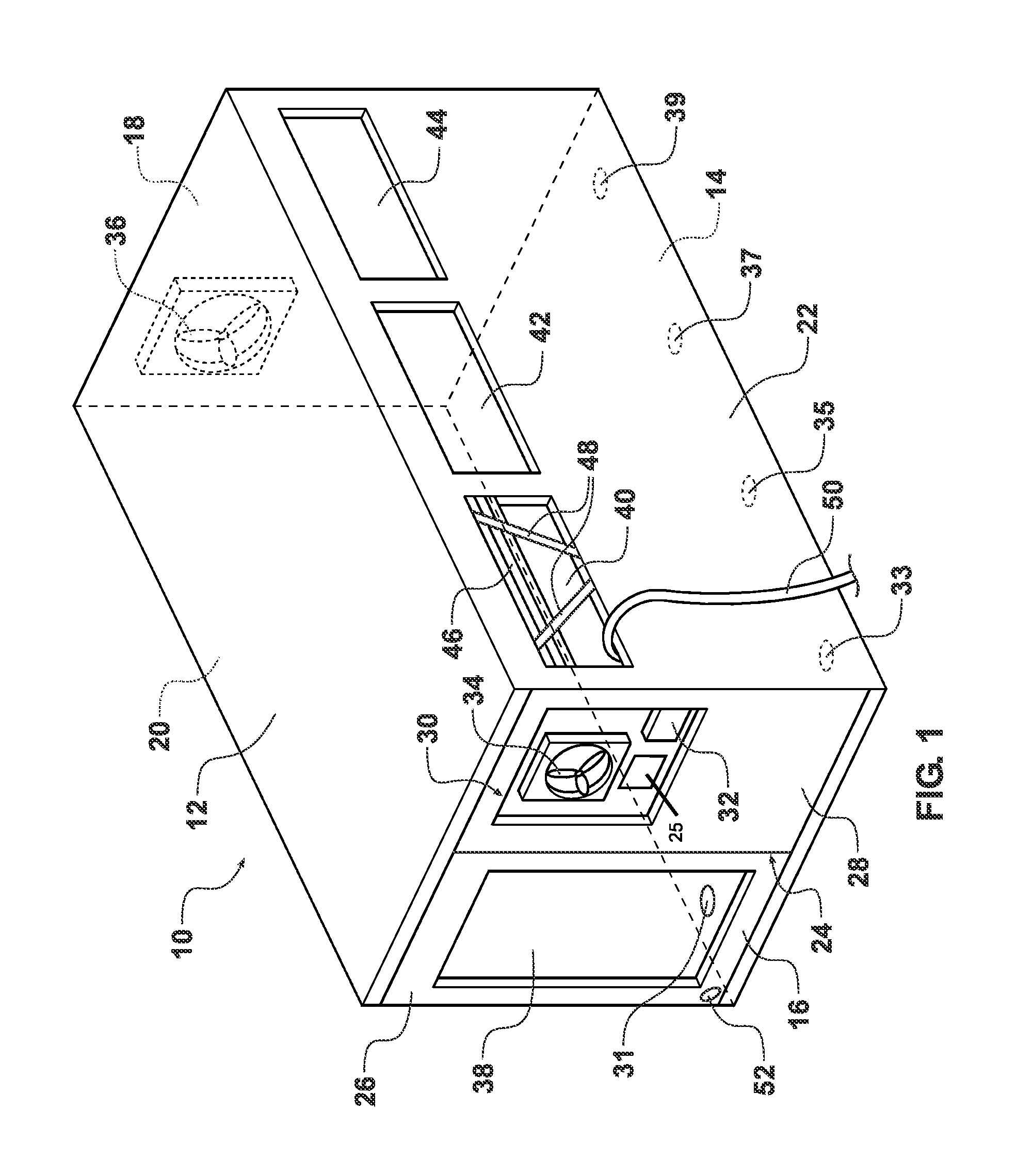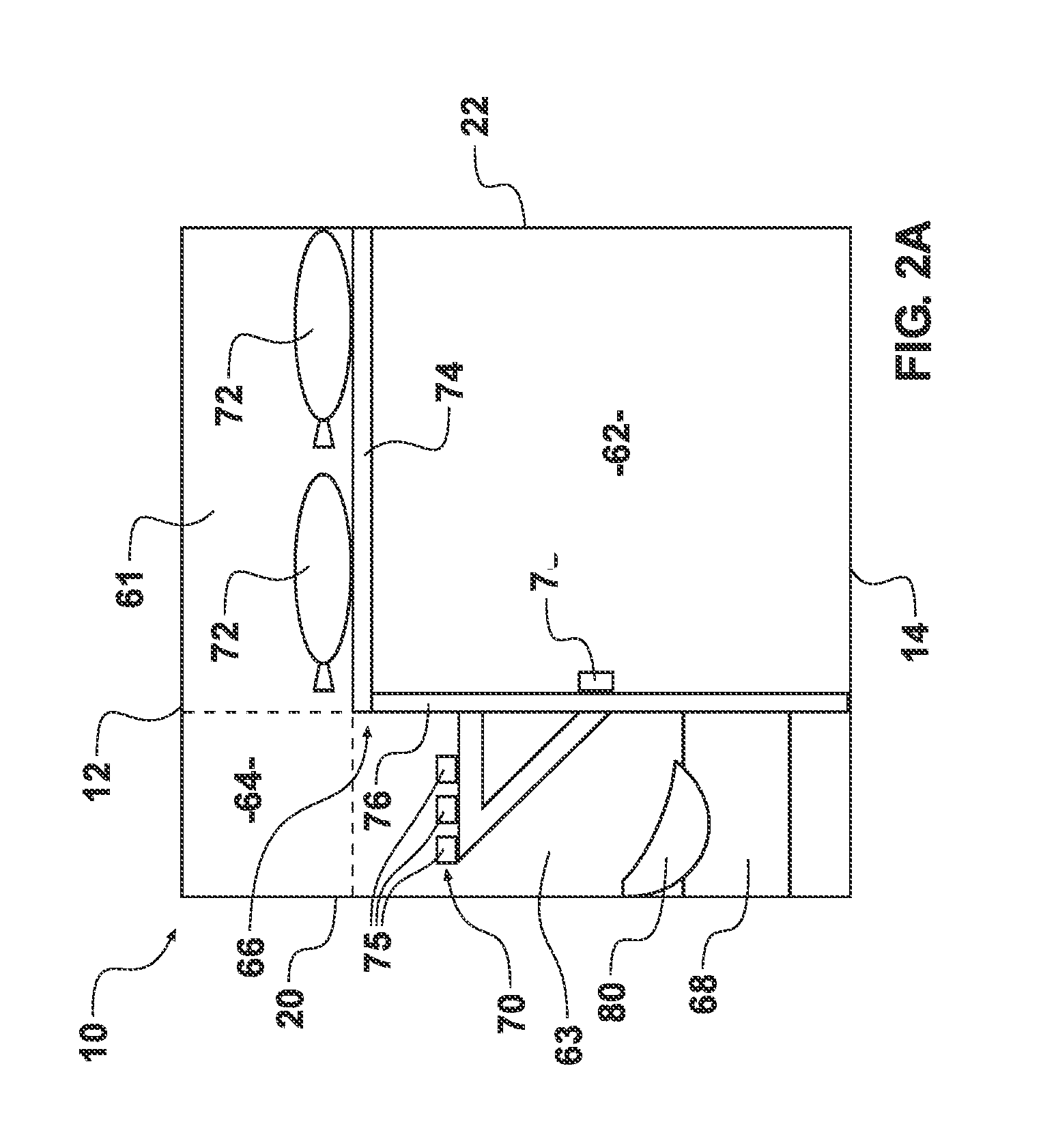Method of shipping livestock
a technology of livestock and shipping containers, applied in the field of shipping containers, can solve the problems of hazardous chemicals such as ammonia and carbon dioxide, which can become hazardous to livestock, and produce waste from livestock, so as to ensure the health and safety of livestock
- Summary
- Abstract
- Description
- Claims
- Application Information
AI Technical Summary
Benefits of technology
Problems solved by technology
Method used
Image
Examples
Embodiment Construction
[0031]Now referring primarily to FIG. 1, an external view of an embodiment of a shipping container 10 is illustrated. Particular embodiments relate to a shipping container 10 for transporting livestock, where the livestock can include one or more cattle, horses, sheep goats, pigs, other domestic livestock, or exotic animals. The exterior of the shipping container 10 is illustrated with roof 12, a bottom 14, a front wall 16, a back wall 18, a first sidewall 20 and a second sidewall 22 forming an interior storage space. The front wall 16, back wall 18, first sidewall 20 and second sidewall 22 may be collectively referred to as the sides or a plurality of sidewalls, and it should be appreciated the terms, “top,”“bottom,”“front,” and “back” are used as relative terms for identification relative to the other sides and that shipping containers can be configured with any number of sides or in any number of orientations.
[0032]Each of the sides can be constructed from metal connected to a me...
PUM
 Login to View More
Login to View More Abstract
Description
Claims
Application Information
 Login to View More
Login to View More - R&D
- Intellectual Property
- Life Sciences
- Materials
- Tech Scout
- Unparalleled Data Quality
- Higher Quality Content
- 60% Fewer Hallucinations
Browse by: Latest US Patents, China's latest patents, Technical Efficacy Thesaurus, Application Domain, Technology Topic, Popular Technical Reports.
© 2025 PatSnap. All rights reserved.Legal|Privacy policy|Modern Slavery Act Transparency Statement|Sitemap|About US| Contact US: help@patsnap.com



